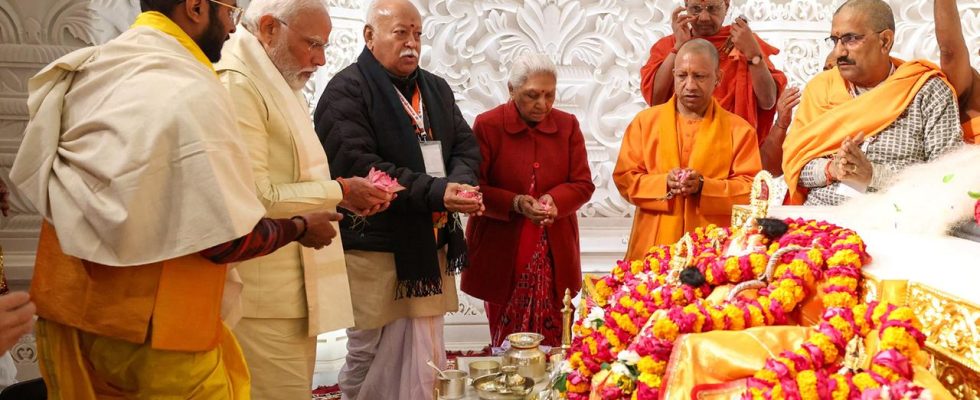Indian Prime Minister Modi inaugurated a new Hindu temple with a grand ceremony. A controversial building because it was built on the ruins of a mosque. The opposition spoke of a show of force.
A Hindu priest blew a traditional conch to consecrate the new Ram temple in Ayodhya, the holy city in the northern Indian state of Uttar Pradesh. And after the ceremony, India’s prime minister chose pathetic words to describe what was happening.
“Today is January 22, 2024. Not just any date in the calendar, but the beginning of a new era,” said Narendra Modi. Today, “after centuries of patience, countless sacrifices and penances,” Lord Ram returned to his birthplace.
Billions worth Infrastructure project
In doing so, Modi fulfilled a decades-old promise that a temple for one of the central deities of Hinduism should be built on this very site. “Today we have liberated ourselves from the mindset of slavery and embraced a complicated past,” Modi said. “But the future looks bright from now on. We are creating a new story.”
It is a new story that is costing Modi’s government around 200 million euros. It is not just the temple and the temple district, but the whole of Ayoydha that is supposed to shine in new splendor – an infrastructure project worth billions.
Many Hindus believe that the popular deity Ram was born at the site of the temple. The destruction of the mosque led to serious unrest a good three decades ago, with around 2,000 deaths, according to media reports. In 2019, the country’s highest court finally ruled that Hindus had the right to build their temple on the disputed piece of land. Radical Hindu groups have compared its importance to that of Mecca for Muslims or the Vatican for Christians.
Mosque was destroyed in 1992
The temple itself is by no means without controversy, as it practically stands on the ruins of a mosque. It was destroyed by Hindu fanatics in 1992. The riots that followed resulted in 2,000 deaths. This has not been forgotten, says journalist Nilanjan Mukhopadhyay, who has written a book about Ayodhya.
“The events of 1992 are still of great importance today,” says the journalist. Those who had been in Ayodhya on December 6, 1992 to demolish the mosque would now come to take part in a sort of award ceremony and then a victory parade.
Modi did not address the conflict directly
But critical voices can hardly be heard that day. It is a festival day for Ayodhya and India and for all Hindus worldwide. Prime Minister Modi acted like the chief priest. Dressed in a traditional golden kurta, he led the consecration ceremony in the sanctum sanctorum of the temple. Hindu priests stood around him singing religious songs.
Everything was broadcast on a large screen outside, where thousands of guests were sitting. Among them were politicians, priests, actors and industrialists. And probably hundreds of millions of people across India also watched the event live on television and on the Internet.
Prime Minister Modi only indirectly addressed the conflicts around Ayodhya, but most people will have understood him. “Some may say that the construction of the Ram temple will trigger a firestorm,” he said. “Today I would like to call on these people to rethink. Because Ram is energy, not fire, Ram is the solution, not the argument.”
Opposition stayed away from the ceremony
Nevertheless: Modi’s opponents accuse him of mixing politics and religion with the opening of the temple to an extent that has never been the case in modern India – also because parliamentary elections are coming up in India in the spring.
Modi also wants to transform the country into a Hindu state, according to the opposition. It is also fitting that for the first time the leader of the Hindu cadre organization RSS was allowed to speak at such a government-controlled event. The RSS has fascist traits, according to criticism.
The leaders of the opposition, however, stayed away from the temple consecration. Because, as it was said, they did not want to retrospectively legitimize past injustice. In addition, they did not want to be part of this event, which was also a demonstration of power by the ruling Hindu nationalists.
Peter Hornung, ARD New Delhi, tagesschau, January 22, 2024 4:53 p.m

